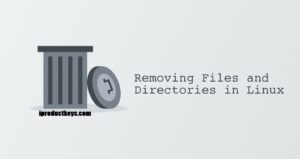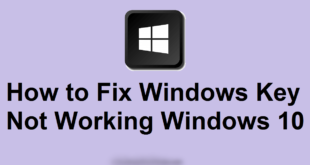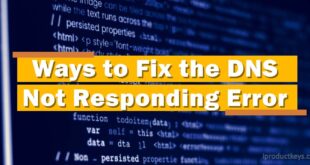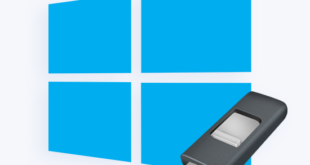If you looking on the internet a How to Remove Files and Directories Using Linux Command Line So, you come to the right place now day share with you an amazing method How to Remove (Delete) Directory in Linux In this tutorial, we will show you how to use the rm, unlink, and rmdir commands to remove files and directories in Linux.

You can get a prompt similar to “rmdir:’dir’: Directory not empty’ if you try to remove a directory using a command such as rmdir and can not delete the directory. You should compare “mydir” with the directory name in the illustration above. Running the order will delete all files and subdirectories from the directory reciprocally. you can also check out the How to Rename Files in Linux.
How to Remove Files and Directories In Linux
Table of Contents
To remove (or delete) a file in Linux from the command line, use either the rm (remove) or unlink command.
The unlink the command allows you to remove only a single file, while rm you can remove multiple files at once.
Be extra careful when removing files or directories because once the file is deleted, it cannot be easily recovered.
- To delete a single file, use the
rmorunlinka command followed by the file name:unlink filenamerm filenameIf the file is write-protected, you will be prompted for confirmation, as shown below. To remove the file type
yand hitEnter. Otherwise, if the file is not write-protected, it will be deleted without prompting.rm: remove write-protected regular empty file 'filename'? - To delete multiple files at once, use the command followed by the file names separated by space.
-
rm filename1 filename2 filename3You can also use a wildcard (
*) and regular expansions to match multiple files. For example, removing all.pdfFiles in the current directory, use the following command:rm *.pdfWhen using regular expansions, first list the files with the
lscommand so that you can see what files will be deleted before running thermcommand. - Use the
rmwith the-iOption to confirm each file before deleting it:rm -i filename(s) - To remove files without prompting, even if the files are write-protected, pass the
-f(force) option to thermcommand:rm -f filename(s) - You can also combine
rmoptions. For example, removing all.txtFiles in the current directory without a prompt in verbose mode, use the following command:rm -fv *.txt
How to Remove Directories (Folders)
In Linux, you can remove/delete directories with the rmdir and rm.
rmdir is a command-line utility for deleting empty directories while with rm you can remove directories and their contents recursively.
- To remove an empty directory, use either
rmdirorrm -dfollowed by the directory name:rm -d dirnamermdir dirname - To remove non-empty directories and all the files within them, use the
rmcommand with the-r(recursive) option:rm -r dirnameIf a directory or a file within the directory is write-protected, you will be prompted to confirm the deletion.
- To remove non-empty directories and all the files without being prompted, use
rmwith the-r(recursive) and-foptions:rm -rf dirname - To remove multiple directories at once, use the
rm -ra command followed by the directory names separated by space.rm -r dirname1 dirname2 dirname3Same as with files you can also use a wildcard (
*) and regular expansions to match multiple directories.
How to Remove (Delete) Directory in Linux
Within Linux systems, there are different ways to delete directories. You will delete files and folders using the graphical user interface of the system if you use the Windows file manager such as Gnome’s Files or KDE’s Dolphin. But you can uninstall directories (folders) from the command line if you are running on a headless server or you want to disable several directories at once.

We should clarify in this article how to uninstall Linux files by using rmdir, rm and finding commands.
Before You Begin
The directory is actually moved to the Trash anytime you delete a directory using a mobile file management method.
Be very cautious when deleting files or folders from the command line, as the directory cannot be entirely restored after it has been deleted using the commands mentioned in this article.
Deleting a directory includes written authorization on the output of the directory on most Linux file systems. If not, the error “Operation not allowed” you will receive.
Directory names with a space in them must be escaped with a backslash (/).
Removing Directories with rmdir
rmdir is a command-line utility for deleting empty directories. It is useful when you want to delete a directory only if it is empty, without needing to check whether the directory is empty or not.
To delete a directory with, type the command followed by the name of the directory you want to remove. For example, to delete a directory named dir1 you would type:
rmdir dir1If the directory is not empty, you will get the following error:
rmdir: failed to remove 'dir1': No such file or directory
In this case, you will need to use the rm command or manually remove the directory contents before you can delete it.
Removing Directories with rm
rm is a command-line utility for deleting files and directories. Unlike rmdir the rm a command can delete both empty and non-empty directories.
By default, when used without any option rm does not remove directories. To delete an empty directory, use the -d (--dir) option, and to delete a non-empty directory and all of its contents, use the -r (--recursive Or -R) option.
For example, to delete a directory named dir1 along with all of its contents, you would type:
rm -r dir1If a directory or a file within the directory is write-protected, you will be prompted to confirm the deletion. To remove a directory without being prompted, use the -f option:
rm -rf dir1To remove multiple directories at once, invoke the rm command, followed by the names of the directories separated by space. The command below will remove each listed directory and their contents:
rm -r dir1 dir2 dir3The -i option tells rm to prompt you to confirm the deletion of each subdirectory and file. If the directory contains a lot of files, this can be a little annoying, so you may consider using the -I option what will prompt you only once before proceeding with the deletion.
rm -rI dir1
To remove the directory type y and hit Enter.
rm: remove 1 argument recursively? y
You can also use regular expansions to match and delete multiple directories. For example, to remove all first-level directories in the current directory that ends with _bak, you would use the following command:
rm -r *_bakUsing regular expansions when removing directories may be risky. It is recommended first to list the directories with the ls command so that you can see what directories will be deleted before running the rm command.
Removing Directories with find
find is a command-line utility that allows you to search for files and directories based on a given expression and perform an action on each matched file or directory.
The most common scenario is to use the find command to delete directories based on a pattern. For example, to delete all directories that end with _cache in the current working directory, you would run the following:
find . -type d -name '*_cache' -exec rm -r {} +Let’s analyze the command above:
/dir– recursively search in the current working directory (.).-type d– restricts the search to directories.-name '*_cache'– Search only directories that end with_cache-exec– executes an external command with optional arguments, in this case, that isrm -r.{} +– appends the found files to the end of thermcommand.
Removing all empty directories
To remove all empty directories in a directory tree, you would run:
find /dir -type d -empty -deleteHere is an explanation of the options used:
/dir– recursively search in the/dirdirectory.-type d– restricts the search to directories.-empty– restricts the search only to empty directories.-delete– deletes all found empty directories in the subtree.-deleteCan delete only empty directories.
Use the -delete option with extreme caution. The find command line is evaluated as an expression, and if you add the -delete option first, the command will delete everything below the starting points you specified.
Always test the command first without the -delete option and use -delete it as the last option.
/bin/rm: Argument list too long
This error message appears when you use the rm command to remove a directory that contains a huge number of files. This happens because the number of files is larger than the system limit on the size of the command line argument.
There are several different solutions to this problem. For example, you can cd to the directory and manually or using a loop to remove sub-directories one by one.
The easiest solution is first to delete all files within the directory with the find command and then delete the directory:
find /dir -type f -delete && rm -r /dirConclusion
By now, you should have a good understanding of how to use the Linux rm, rmdir and unlink commands, and you should be able to safely remove files and directories from the command line. With rm and find you can delete directories based on different criteria quickly and efficiently. Deleting directories is a simple and easy process, but you must be cautious not to delete important data.





